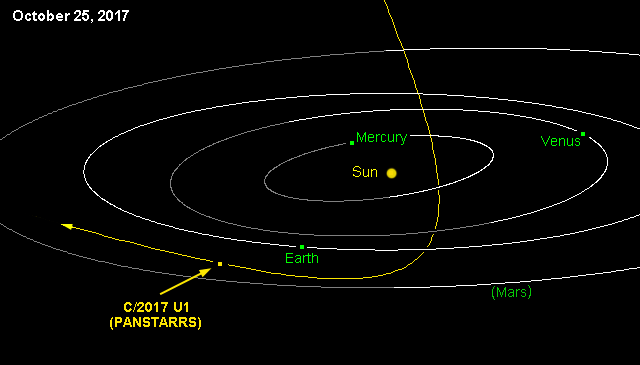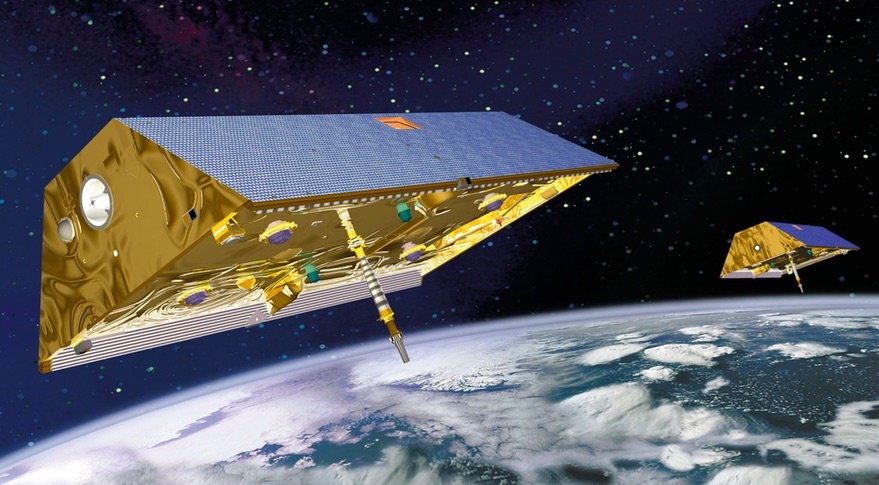For centuries, skywatchers have chronicled the comings and goings of thousands of comets. all of them has come from someplace in our own solar system, either the Kuiper Belt beyond Neptune or the much more distant Oort cloud at the fringes of the Sun’s realm.
But an object swept up just a week ago by observers using the PanSTARRS one telescope atop Haleakala on Maui has an extreme orbit — it’s on a hyperbolic trajectory that does not seem to be bound to the Sun. Preliminary findings, published earlier today by the International Astronomical Union’s minor planet Center (MPC), recommend that we are witnessing a comet that escaped from another star.
“If further observations confirm the unusual nature of this orbit,” notes Gareth Williams, the MPC’s associate director, “this object may be the 1st clear case of an interstellar comet.”
Designated C/2017 U1, comet PanSTARRS was a dim, 20th-magnitude blip when 1st noticed on Oct eighteenth, after having zipped within 37,600,000 km (23,400,000 miles) of the Sun on Sep 9th. Such a close approach to the Sun’s searing heat would normally spell doom for alittle comet. based on its apparent brightness, dynamicist Bill gray calculates that it might have a diameter of about 160 meters (525 feet) if it were a rock with a surface reflectivity of 100%. “It went past the Sun really quick,” gray notes, “and might not have had time to heat up enough to break apart.”
Now it’s headed out of the solar system, ne’er to come back. It passed closest to Earth on Oct 14th at a distance of about 24,000,000 km (15,000,000 miles), and astronomers worldwide are tracking it within the hopes of divining its true nature — particularly whether it’s displaying any cometary activity.
What gives C/2017 U1 away as an interstellar visitor wasn’t its terribly high inclination (122°) with respect to Earth’s orbit, that is not significantly rare, but additional critically its extreme hyperbolic eccentricity (1.19). check out the comet’s pass through the inner solar system using JPL’s interactive Horizons app (requires Java).

Dynamicists had previously calculated how often comets and asteroids from other stars should be in our midst. However, the only other comet suspected to have an interstellar origin was comet Bowell (C/1980 E1), which had an eccentricity close to 1.05. However, notes S&T Senior conducive Editor Roger Sinnott, “Comet Bowell apparently wasn’t hyperbolic on the way in, but only because it left” because that object passed within 35,000,000 km (0.23 a.u.) of Jupiter, whose gravity gave it a boost in speed.
According to gray, comet PanSTARRS appears to have entered the solar system from the direction of the constellation Lyra, within a couple of degrees of right ascension 18h 50m, declination +35° 13′. that is tantalizingly close to Vega — and eerily reminiscent of the plot of the movie Contact — but its exact path does not (yet) seem to link any specific star.
This object entered the solar system moving at 26 km (16 miles) per second. At that speed, in ten million years it would traverse 8,200,000,000,000,000 kilometre — over 850 light-years.
Nissan’s EVs will change engine noises for ‘song’
source:skyandtelescope.com




